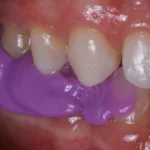Creating high precision prostheses involves taking impressions, and subsequently producing quality stone models, particularly in terms of the accuracy of detail reproduction and dimensional stability.
Even extremely precise prosthodontic models require a fundamental component to be functional: a bite registration key that faithfully reproduces the situation in the oral cavity inside the articulator.
During the bite registration process, various types of error may arise, depending on the different anatomic characteristics of the elements, as well as on the materials utilised. Various materials are used to reproduce the ratios in existence between the two dental arches, and it is advisable to be familiar with the characteristics of these materials in order to choose the most appropriate one for the clinical situation in question.
Characteristics of an ideal bite registration material
Ever since the first ever bite registration was conducted in gypsum by Philipp Pfaff in 1756, several aspects relating to the optimum techniques and materials for this process have changed; ideally, a material should:
- have reduced resistance during the intercuspation phase, in order to allow a natural position to be obtained
- set quickly and involve limited dimensional changes
- be able to register accurately the details of the occlusal surfaces
- be easy to handle
The most commonly used materials with such characteristics today are articulation waxes and elastomers.
Wax or silicone for bite registration?
On the one hand, waxes are easy to use and have constituted a consolidated standard tool for quite some time. However, one drawback is their lack of good dimensional stability, since wax is highly susceptible to changes in temperature.
This high deformability therefore also affects potential errors which may arise during the removal from the oral cavity, storage and transportation.
An alternative to this material are addition silicones, such as Occlufast CAD, a product developed specifically by Zhermack for bite registration. The texture is truly favourable, imperceptible for the patient but offering high levels of hardness, which make it ideal to allow easy burring and avoid compressions and incorrect repositioning.
Addition silicones are easy to position and extremely precise, in addition to affording suitable handling and setting times for the maximal intercuspation bite registrations and for centric, protrusive or lateral relation bite registrations. Occlufast is also applicable to gnathology, to diagnostic assessment of cranio-cervical-mandibular disorders and for centric bite registration in orthodontics.
Its applicability to different clinical moments is made possible by its extreme precision, superior hardness and outstanding thixotropy, which allow the material to be distributed evenly to detect all the details, and its poor susceptibility to temperature variations.
Do you want more information on Zhermack Dental products and solutions?
Contact us

 Zhermack SpA has been one of the most important producers and international distributors of alginates, gypsums and silicone compounds for the dental sector for over 40 years. It has also developed solutions for the industrial and wellbeing sectors.
Zhermack SpA - Via Bovazecchino, 100 - 45021 Badia Polesine (RO), Italy.
Zhermack SpA has been one of the most important producers and international distributors of alginates, gypsums and silicone compounds for the dental sector for over 40 years. It has also developed solutions for the industrial and wellbeing sectors.
Zhermack SpA - Via Bovazecchino, 100 - 45021 Badia Polesine (RO), Italy.


